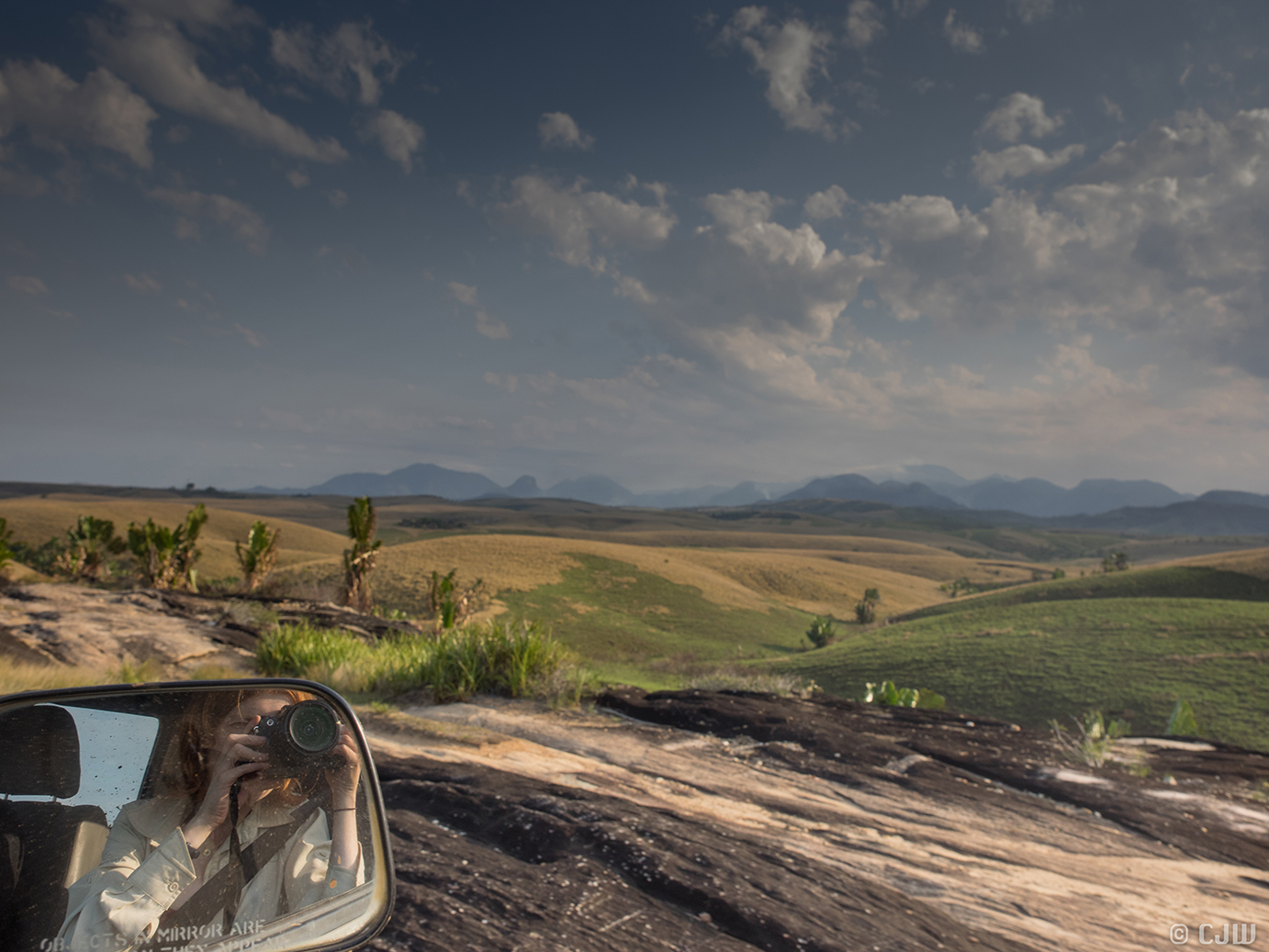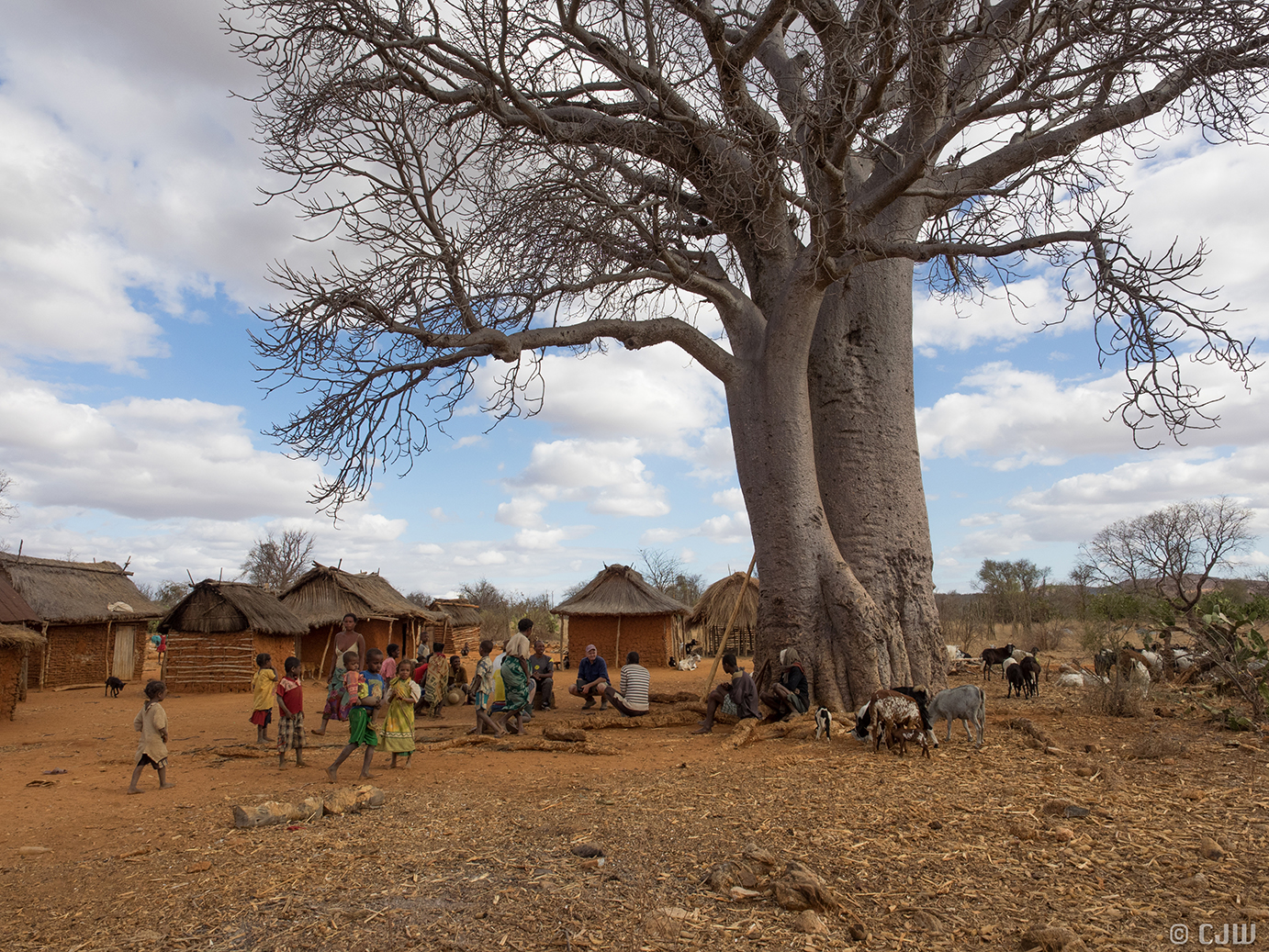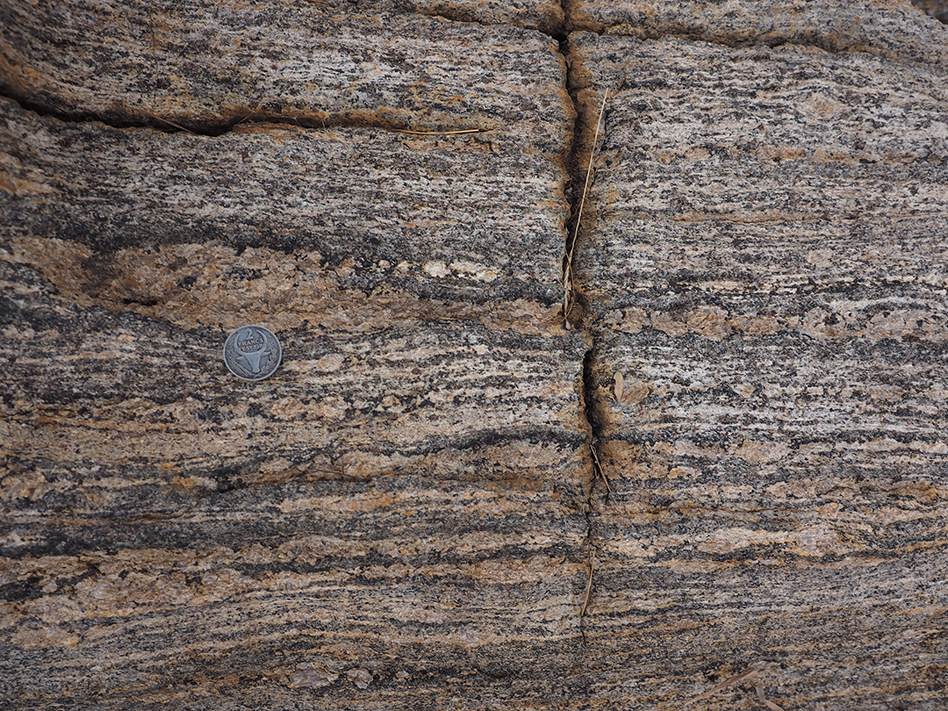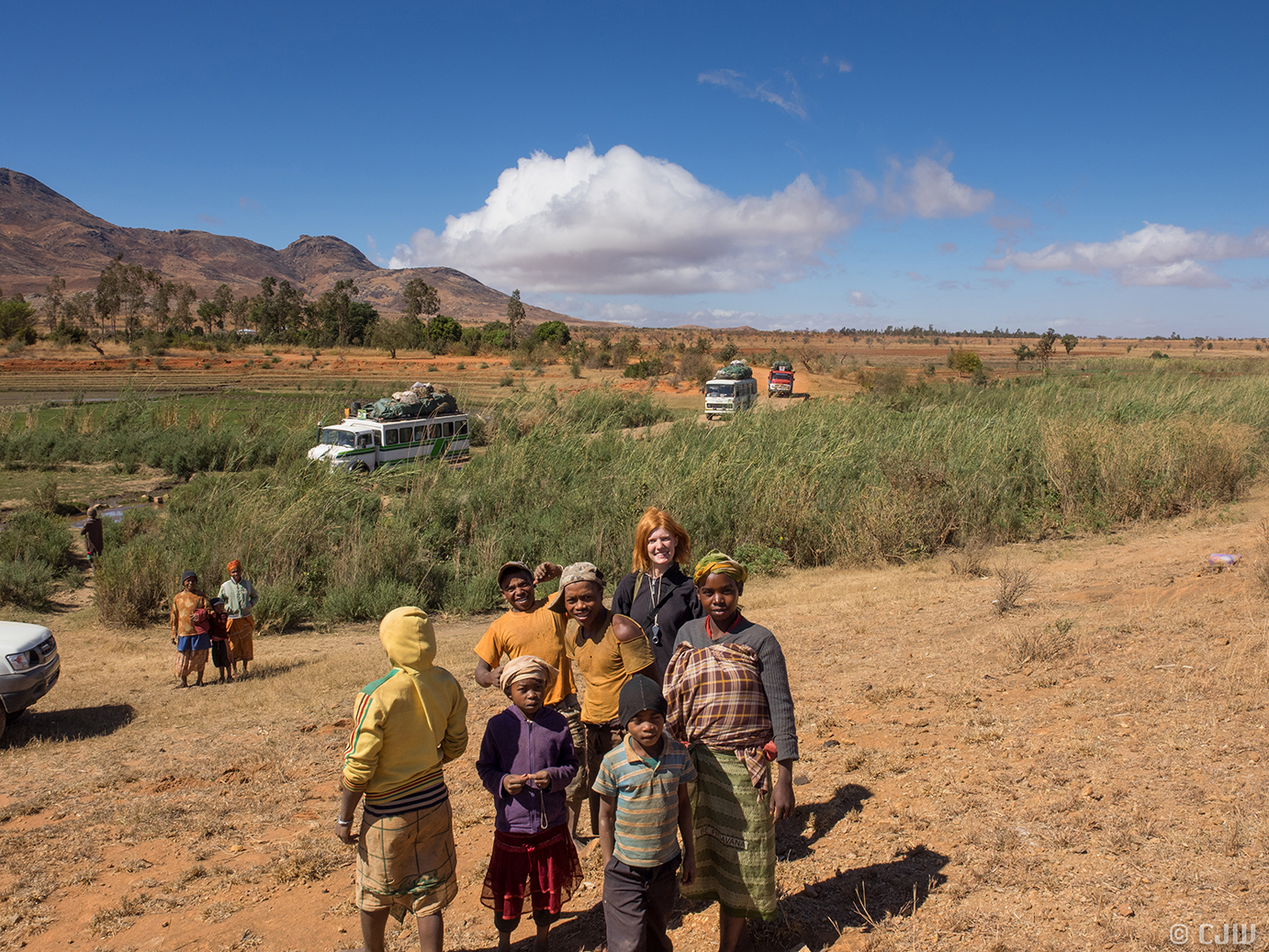Stories from the field: Madagascar

Catherine Wheller visited this enigmatic African island in search of rocks that hold the key to the formation of Gondwana.
Published 7 October 2016
Many researchers are bursting with field stories; tales of arduous travel to far-off places, of courageous food choices, of staring at the stars listening to the sound of the jungle. And, of course, of juggling kilo upon kilo of rocks in their backpacks.
For Catherine Wheller, a final-year PhD student in the School of Earth Sciences at the University of Melbourne, these field stories include ancient rocks, perilous roads and a newborn Malagasy girl named ‘Wheller’.

My PhD research took me to Madagascar with Dr Steven Boger, also from the University of Melbourne, and Professor Richard White from Johannes Gutenberg University Mainz. We were searching for rocks that could hold clues about the formation of the supercontinent Gondwana.
Rocks found in the south of the island record an event that took them to extremely high temperatures around 520 million years ago. By looking at the timing of other events around the world, it is thought that this preserved history in Madagascar represents one of the final collisions involved in the formation of Gondwana.

Under the supervision of Professor Roger Powell, I looked deep into the minerals that make up rocks in order to find out the conditions in which this part of the Earth is formed.
Events such as continents colliding at plate boundaries can cause rocks formed at the surface (sedimentary or igneous) to be buried deep into the crust. The deeper a rock gets buried (or ‘subducted’) the higher pressures and temperatures the rock experiences. Minerals in the rock change to reflect the changing conditions. After the burial has stopped and fluid runs out, the minerals stop changing.
Piecing together the history
After millions and millions of years, these rocks can be found back at the surface (via erosion and uplift) and record that an extreme event occurred. We can look at the minerals preserved to piece together the history of the terrane. The timing of this heating event can then be determined to match up with events elsewhere in the world.
My work is to quantify the pressure and temperatures associated with these rocks, and therefore this final collision.
By investigating how minerals change with the conditions and what can effect these changes, we can use this knowledge to identify terranes all across the world that formed in the same type of event (i.e. as a result of subduction or mountain building) and piece together a global history of the movement of our continents.

I spent one month in Madagascar, flying into the capital, Antananarivo, to organise supplies and collect our field vehicle and guide. It took three days to drive about 400 km down the east coast before heading inland, where the scenery changed suddenly from dodging children and chickens on the roads to apparent isolation.
Typically, days included manoeuvring the Hilux through narrow dirt roads, either overused to the point of collapse or only used by zebu (cattle) carts, from village to village. With a map in hand, we targeted areas of high magnetism – a key feature of the rocks we aimed to sample.
Each night we approached a new village and camped nearby, often fortunate to experience the hospitality of the chief and his family. In most places we were the first foreigners to visit in a generation.
The following is a field account from my diary, recalling my time in the village of Imanombo, a central market town near where our best rock samples were taken.

We are working to a ‘field clock’ – awake at 5:30am and in bed at 8:00pm. The moon is getting fuller now and sleeping in a tent under the moonlight is blinding.
We arrive in Imanombo to find the chief and his family. We are to camp behind his house near the zebu and turkey pen. The turkeys do not seem to like the zebu and gobble in protest, making for a night full of strange sounds.
That evening we share some local music and dance with the children, as I try to keep up with the fast beat. A reciprocal sharing of knowledge leads to Aussie rock being played for what I believe to be the first time in southern Madagascar. I must also take responsibility for introducing the ‘chicken dance’ to the locals of this remote village.
We stay here for two nights, the longest we have stayed in a village. Arriving back at dusk one afternoon, the chief asks whether I want to ride on his motorbike with him (this is obviously his pride and joy; it was wheeled out during the day and polished). We ride out of the village down a straight track with the sun setting over the mountains.
On the last evening, the chief’s nephew proclaims some news – the chief’s wife had just given birth to a daughter, their second. But that isn’t all. The timing of the birth is not a coincidence, but fate; a foreign girl has come into their village, accepted their hospitality, played with their children and brought together two cultures where there is often mistrust, with the motorcycle trip ultimately solidifying the ‘you are one of us’ mentality. Consequently, the chief would like to name his newborn daughter after me.
This is translated to me through a giant grin, which only grew as I am absolutely struck dumb by the honour. This is not a simple process though – as it happens, his eldest daughter’s name is ‘Catharina’ and so ‘Catherine’ wasn’t an option. However, they did like the sound of ‘Wheller’ - here pronounced ‘Whale-a’. Feminine names often stress ‘a’ on the last syllable, so this was perfect! So there you have it – there is a little girl born in remote southern Madagascar called ‘Wheller’.
We could easily have spent many more weeks in the care of the Malagasy. And while there are no more field expeditions in the near future, there are still more research questions to be answered.
Where is the location of the suture that joined the African and Indian parts of the continents? Does this suture extend into then neighbouring, now isolated Sri Lanka, Tanzania and Antarctica? And most importantly, on which Malagasy rock did I leave my camera lens?
Banner Image: Catherine Wheller